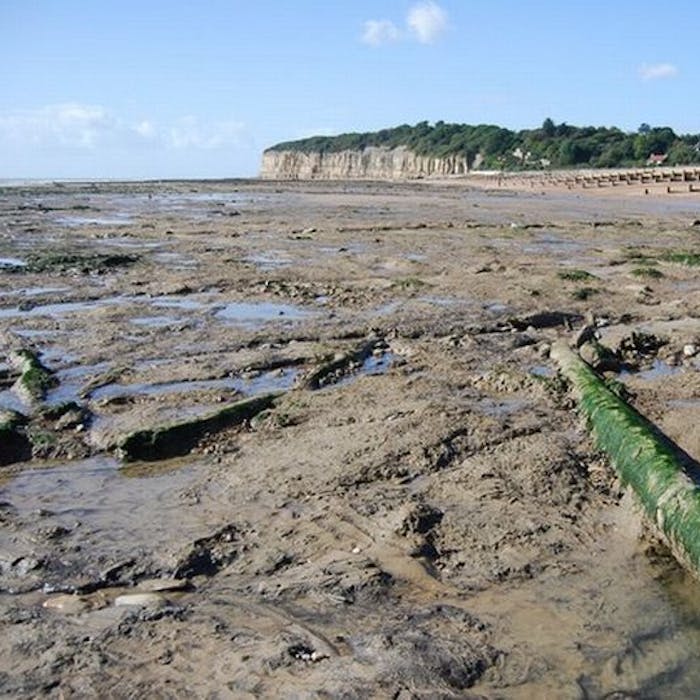
Petrified forest at Pett - the remains of an ancient landscape on the shore in Sussex
A sunken forest that can be seen in the sand at low tide on the Sussex coast is thought to be at least 6,000 years old - and a relic of a time when sea levels were about 100ft lower than today.
The lost forest can be found on the sands of Pett Level - a beach between the towns of Hastings and Rye. The coast around here has been much altered by both erosion and the retreat of the sea, and the forest was preserved after sea levels rose and flooded the woodland.
Spongy tree roots and branches emerge from beneath heaps of sand, rocks, barnacles and mussels here when the tide goes out.
Centuries ago, the area would have been freshwater marshland with trees growing, and the coastline much further out than it is now,
Remains of the trees can be identified as oak, birch and hazel, saplings have been spotted standing in the sand, and walkers have gathered hazelnuts carbon-dated to 5,200 BC. However, the forest has not generally been much studied.
How much can be seen depends on the weather, with storms clearing much sand and debris from around the tree stumps. There are also other interesting prehistoric remains on the beach including dinosaur footprints and fossils from the Lower Cretaceous period.
Discoveries include dinosaur ankle and tail bones, and a crocodile jaw.
Flint tools were found in a cave in the cliffs above the sunken forest in the early 1900s, suggesting the hollow could have been used by early man to watch the woodland area for game.
Further reading
Links to external websites are not maintained by Bite Sized Britain. They are provided to give users access to additional information. Bite Sized Britain is not responsible for the content of these external websites.
